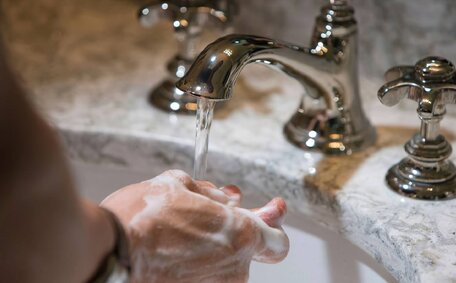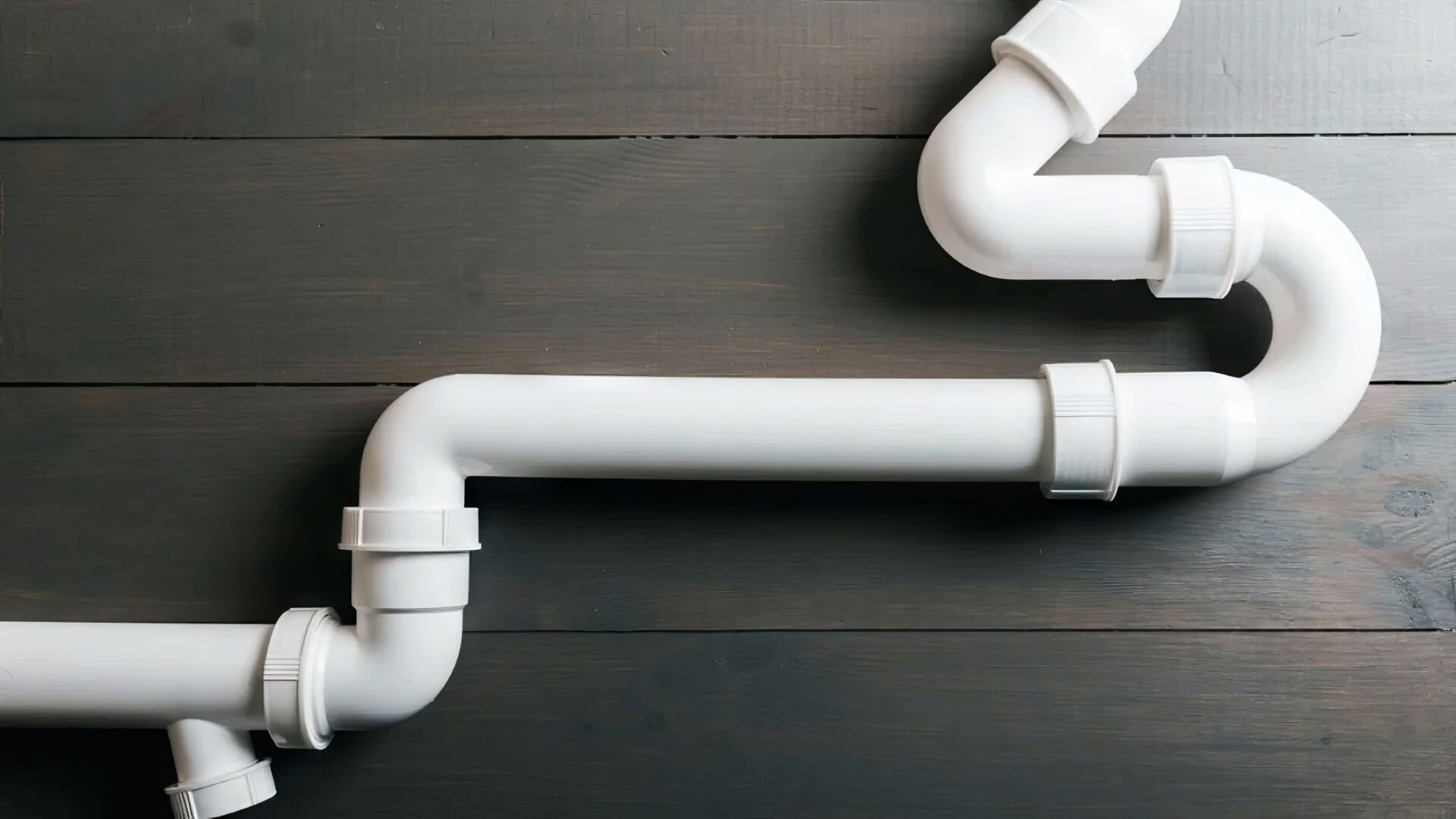Common Causes of Blocked Drains in Apartments
Blocked drains rank as a frequent issue in apartment buildings. Several factors can cause these blockages:
Grease Buildup
Pouring grease, fats, and oils down kitchen sinks is a primary cause of blockages. As these substances cool and solidify in drain pipes, they stick to the sides, eventually building up and leading to a significant plumbing problem by blocking water flow.
Foreign Objects
It’s disturbingly common for tenants to put inappropriate items down drains that get lodged, like wet wipes, cotton buds and female hygiene products. Discarding items like wet wipes and hygiene products incorrectly can rapidly compromise plumbing systems.
Pipe Issues
Leaks in your hot water system or tree root incursion can cause cracks or breaks over time. Shifted or sagged pipes can disconnect and damage your plumbing, allowing solids to gather and block water flow.
The extensive plumbing systems in apartments have more potential failure points for debris-caused blockages compared to houses. Maintaining plumbing systems, educating residents, and timely repairs can help prevent recurrent blockages.
Identifying Blockages and Determining Responsibility
Signs of a Blocked Drain
Several signs may indicate a blocked drain in an apartment, such as:
- Water starting to back up in sinks, showers or bathtubs
- Gurgling sounds coming from drains
- Bad smells emanating from drainage pipes
- Toilets flushing slowly or not draining properly
- System failures may result in excess moisture on walls and floors
Ignored blocked drains can result in water damage, mould growth and expensive repairs, highlighting the need for prompt plumbing interventions. It’s crucial not to overlook persistent signs of a blockage - prompt action in addressing blocked drains is strongly advised.
Who’s Responsible for Repairs?
In apartments, ascertaining who responsible for plumbing depends on the location and type of blockage:
- Tenants are generally held accountable for blockages in their kitchen sinks, showers, toilets, and other fixtures.
- For blockages in common property areas such as stairwells or shared laundry rooms, the responsibility lies with the body corporate or landlord.
- For issues in the public sewer lines or external strata plumbing infrastructure affecting the entire strata scheme, the cost and repairs typically fall to the owner responsible.
Under NSW law, it’s vital for tenants to inform landlords of plumbing issues to prevent further damage. And landlords must organise professional repairs within a reasonable timeframe, or risk fines up to $22,000 for uninhabitable dwellings.
To prevent additional damage, don’t ignore a blocked drain. Contact us for a plumber who can quickly assess, clear, and fix the issue.
Tenant vs Landlord Responsibilities
Repair and Maintenance Responsibilities
In a rental property in New South Wales, landlords and tenants have defined responsibilities when it comes to plumbing repairs and ongoing maintenance:
- Landlords are responsible for ensuring plumbing is operational at tenancy commencement and must facilitate repairs as necessary.
- Tenants are responsible for properly using plumbing fixtures like sinks, toilets and drains to prevent unnecessary blockages from hair, grease, etc.
- Tenants should quickly report plumbing issues such as leaks or blockages to the landlord for timely resolution.
- For urgent issues threatening flooding or severe damage in your strata, tenants may choose to notify your landlord and use an emergency plumber, seeking compensation later.
Financial Responsibilities
Repair costs for your property are also divided between landlords and tenants:
- Landlords typically handle repairs to shared plumbing infrastructure, including blocked drains, main lines, and water supply connections.
- Tenants normally pay for clearing self-induced drain blockage or unblocking toilets they clog.
- Compensation rules apply if negligent maintenance or delayed repairs by landlords exacerbate damage.
Clear agreements about plumbing responsibilities ensure quick diagnosis and repair, preventing minor issues from causing major damage.
Locating the Source of the Blockage
Before professional help arrives, there are a few ways residents or maintenance staff can attempt to locate the source of a blocked drain themselves:
Visible Signs
Investigate visible signs of water backing up from fixtures such as sinks or floor drain covers to understand the plumbing issue. While other factors may be at play, these signs usually point to the nearest blockage upstream in the plumbing system.
Pipe Layouts
Consult with the building manager or refer to building plans to trace the plumbing routes from problem areas, which may include sections of private drains. Blockages often occur at joints where vertical stacks move and meet horizontal pipe runs behind walls.
Drain Access
Inspect the water flow by accessing drainage points like removable gully trap covers. A lack of water movement indicates a potential blockage further within your drain lines. Pour water into the top floor access to see which lower openings remain dry.
Pipe Cameras
Use small plumbing cameras that can be manually fed down drain lines to visually identify obstructions. Cheaper DIY models connect to smartphones.
Locating the approximate source of the blockage early allows plumbers to focus repair efforts, restore drainage sooner and minimise exploratory wall damage.
Short-Term Solutions for Clearing Blockages
When a blocked drain is discovered in an apartment building, there are a few short-term solutions residents or maintenance staff can attempt while waiting for a professional plumber:
Plunging
Using a heavy-duty sink plunger on the drain for several minutes is very effective at dislodging minor clogs within the pipes. Take care not to damage plumbing pipes at their joints. Plunging your toilet requires specialised flange plungers to form a tight seal on the water fixtures.
Drain Snakes
A blocked drain can often be temporarily alleviated with hand crank augers or a drain snake to break up obstructions if fed down the lines with care. Ensure the proper size snake for pipes. Take precautions against contact with hazardous drain contents.
Hot Water
Running water at full force for 3-5 minutes can help loosen grease accumulations through increased water pressure. But this can also cause low water pressure and risk scalding and spraying dirty water so wear protective equipment.
Although these methods offer short-term relief, persistent issues will require professional assistance. The source should still be inspected by qualified plumbers to prevent reblocking and permanent damage such as a burst pipe or mould growth.
Long-Term Preventative Strategies
Regular Maintenance
Going beyond regular maintenance is crucial for preventing recurring blockages and clears existing clogs in apartment buildings. It’s essential for professional plumbers to use CCTV cameras annually to scope interior lines and identify potential apartment plumbing problem areas before they cause blockages. Annual drain jetting is effective in removing fat, oil, grease accumulations, and other debris.
Educating Residents
Educating residents on proper drain use and available assistance can significantly reduce the risk of system clogs. Make drain care guidelines part of standard tenancy agreements.
Installing signs near kitchen sinks to direct waste into bins can prevent grease disposal and clarify what not to flush. Remind residents to minimise food waste and daily cleaning product usage where possible.
Upgrades and Improvements
Consider plumbing upgrades to mitigate ongoing issues. Even small pipe diameter increases boost waste carry capacity over time.
Fitting screens over laundry sinks captures hair and lint, preventing them from entering the pipes. Choosing more efficient water heaters, low-flow showers, faucets, and toilets can reduce demand on water systems.
While clearing emergency blockages remains necessary, concentrating efforts and budgets on preventative measures provides longer-term reliability. This reduces tenant disruption and protects property assets from water damage or mould over the years.
Professional Drain Services
The Value of Professional Drain Services
Experienced drain specialists possess the skills, tools, and methods to effectively address apartment drainage problems.
Hydro-jetting, using a high-pressure water jet, can thoroughly clean pipes, removing years of built-up grease, waste, and debris. Hydro-jetting, superior to DIY drain snakes, can efficiently resolve severe blockages, while also addressing root infiltration and reinforcing damaged joints.
CCTV drain inspections visually identify every defect and obstruction within pipes. Advanced crawler-mounted plumbing cameras can clear blockages by precisely identifying the locations of breaches, invasions, cracks, and points prone to future clogs.
Armed with this detailed visibility, his team at Lalor Park Plumbing can provide accurate solutions - whether drain relining, section repairs or full replacement. Ongoing preventative maintenance programs are essential for the long-term optimisation of apartment drainage systems.






